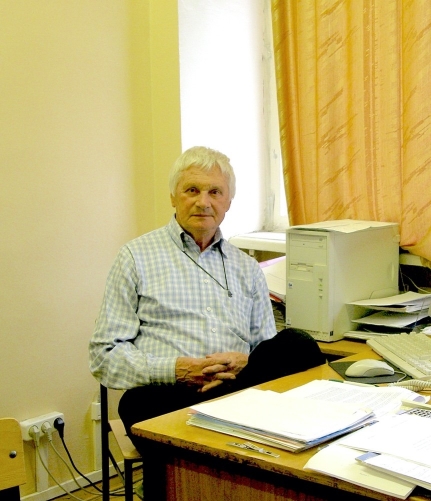

Boris Dolgoshein was a pioneer of many detector technologies. He is one of the fathers of a new branch of the detectors for high energy physics – transition radiation detectors (TRDs).
Indeed, one cannot mention transition radiation detectors without mentioning Boris. He was the physicist who developed and pioneered these gaseous detectors for particle tracking and particle identification. His experience and expertise with these sophisticated type of detectors goes back to the early seventies and there is hardly any TRD in the world in which Boris has not significantly contributed. Among them are the TRD of the HELIOS spectrometer at the SPS, the Transition Radiation Detectors of the ZEUS and HERA-B experiments at HERA, the TRD of the AMS spectrometer and Transition Radiation Tracker of the ATLAS experiment at the LHC. Most of the TRDs in the world, at accelerator-based experiments or in space, were built following the example of one or the other of these TRDs and profited from the intensive and careful R&D programmes Boris and his collaborators carried out.
Boris Dolgoshein, born in 1930, was very well known in the world-wide particle physics community as an inventor of new ideas in the methods of particle detection. Here are a few examples.
In the early sixties, Boris Dolgoshein and his colleagues invented and developed a new type of gas-discharge chamber, the streamer chamber, and brought the technology to perfection. At that time, the technique competed with that of bubble chambers, producing images of particle trajectories with the additional potential of being triggered by external devices via the pulsed electric field. The largest streamer chamber was built in 1968 in MEPhI by Boris and his team. It was 8m long and operated many years in Protvino at the U-70 synchrotron, searching for the W boson.
An article by Boris published in the mid-seventies suggested acoustic registration of high-energy neutrinos by measuring the sound signals from hadron showers created by neutrinos in the depth of ocean waters. The acoustic method was realised on prototypes in the US and at Lake Baikal in Russia and is currently explored in the context of the IceCube and ANTARES neutrino telescopes and may be an option for the future Mediterranean KM3NeT project.
Throughout the time he was preparing detectors for the LHC, Boris continued to work on ideas and concepts for new detectors, and in 1993, in close collaboration with DESY, he started to develop a new type of very high-gain silicon photodetectors (SiPM). These devices work in a Geiger regime and sensitive to single photons. Boris immediately realised the enormous potential of this technology and put his creativity and energy into its development. It is Boris’ merit that today SiPMs have a vast number of applications ranging from the readout of highly segmented calorimeters and photodetectors for astro-particle physics to medical applications like PET.
For his very creative and innovative work, Boris got rewarded with many prizes, such as the Lenin Prize, the Humboldt Prize and the Kapitza Gold Medal. He was an Academician of the Russian Academy of Natural Sciences and a long-standing member of the Advisory Editorial Board of the Journal on Nuclear Instruments and Methods in Physics Research Section A, following and monitoring the progress on design, manufacturing and performance of scientific instruments.
For several generations of experimental physicists, Boris has been an inspirational mentor and a model. His creativity has continuously motivated his colleagues to produce new ideas and to work with great enthusiasm.
It has been an unforgettable experience to all of us to work with a personality like Boris.

